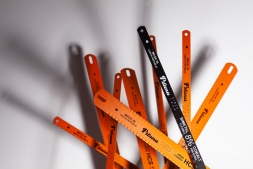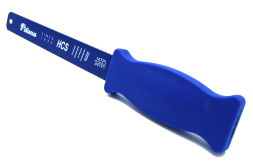Tooth pitch

Choice of tooth pitch, known also as TPI – teeth per inch = number of teeth per inch, is essentially dependent on the workpiece dimensions. Band saw blades with coarse toothing for cutting of large diameters. For worpieces, their diameter is small or for profiles, blades with more fine tooth pitch must be used, so that at lease 2 teeth are in the cut at the same time. The less number of teeth in the cut, the more cutting performance. The reason is that pressure distribution on less teeth means better ability for the teeth to get into the material. Soft materials as aluminium or bronze need enlarged space for chip removal. Otherwise it will cause its cumulation which will negatively effect on the surface quality.
Constant tooth pitch is shown in the first part of the picture, 4 TPI accuately - on one-inch there are 4 teeth. From From this value, the distance between tooth tips can be estimated = 25,4/TPI
We can distinguish between two types of tooth pitches:
Constant tooth pitch
On the whole length of the band saw blades, the teeth always have the same distance between themselves.
Variable tooth pitch
Marked with two numbers X/Y, (e.g. 10/14) - these numbers define the minimal and maximal tooth pitch in the group. On the band saw blade a group of 7 teeth with variable pitch will repeat. Variable tooth pitch will be applied for accomplishment of greater universality of these blades. It comes especially handy in factories where profiles and solid material workpieces are frequently changed. At the same time, variable tooth pitch reduces generation of vibrations that can appear while cutting.








